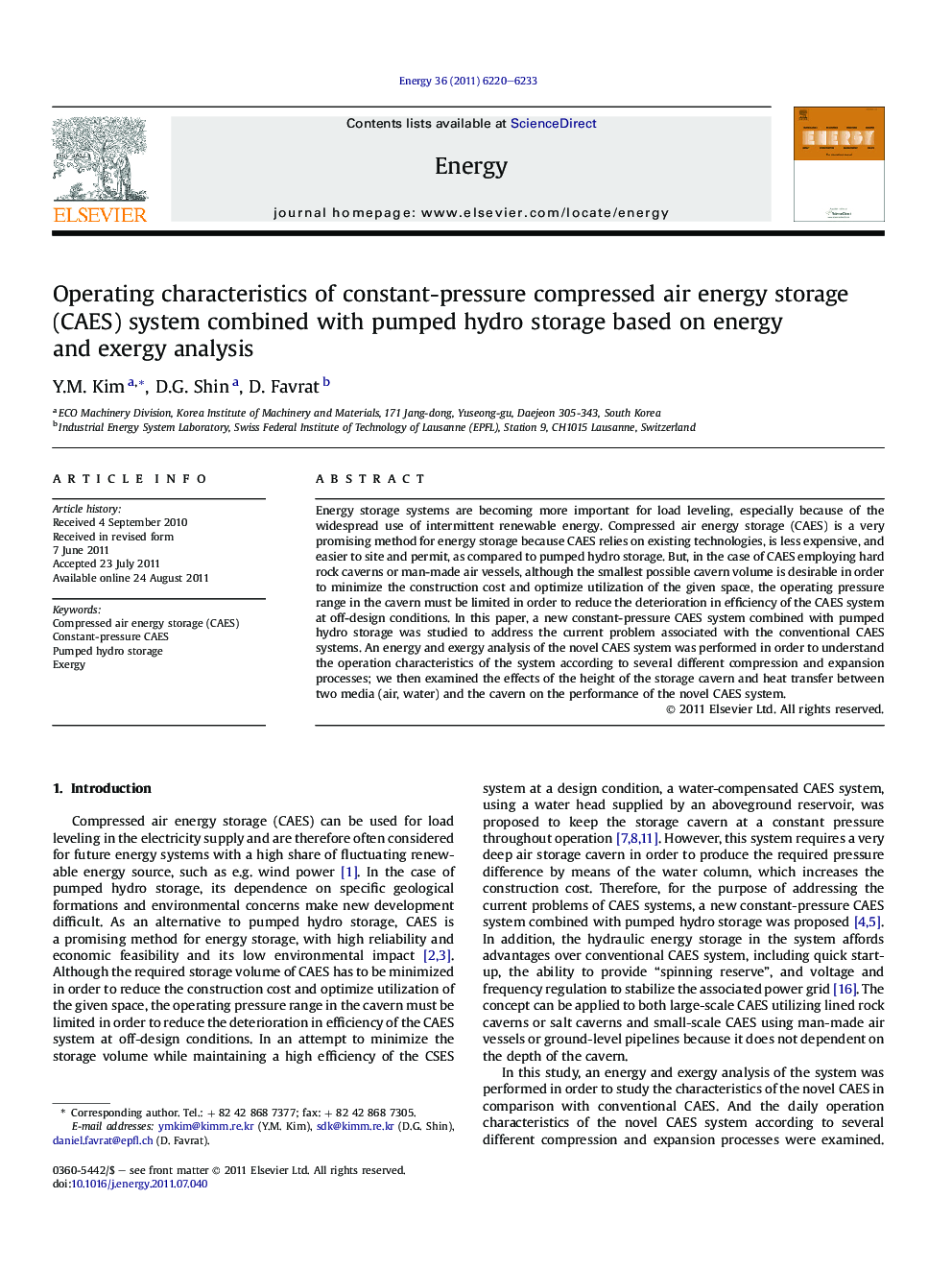| Article ID | Journal | Published Year | Pages | File Type |
|---|---|---|---|---|
| 1734028 | Energy | 2011 | 14 Pages |
Energy storage systems are becoming more important for load leveling, especially because of the widespread use of intermittent renewable energy. Compressed air energy storage (CAES) is a very promising method for energy storage because CAES relies on existing technologies, is less expensive, and easier to site and permit, as compared to pumped hydro storage. But, in the case of CAES employing hard rock caverns or man-made air vessels, although the smallest possible cavern volume is desirable in order to minimize the construction cost and optimize utilization of the given space, the operating pressure range in the cavern must be limited in order to reduce the deterioration in efficiency of the CAES system at off-design conditions. In this paper, a new constant-pressure CAES system combined with pumped hydro storage was studied to address the current problem associated with the conventional CAES systems. An energy and exergy analysis of the novel CAES system was performed in order to understand the operation characteristics of the system according to several different compression and expansion processes; we then examined the effects of the height of the storage cavern and heat transfer between two media (air, water) and the cavern on the performance of the novel CAES system.
► We study a novel constant-pressure compressed air energy storage (CAES) system combined with pumped hydro storage. ► We perform an energy and exergy analysis of the novel CAES system to examine the characteristics of the system. ► Hydraulic energy storage is used to maintain a constant pressure in the air storage tank of the CAES system, additionally storing energy. ► The effect of the height of the storage cavern on the performance of the novel CAES system is not serious. ► The irreversibility of hydraulic part by insufficient heat transfer with surrounding can be solved by spraying water.
